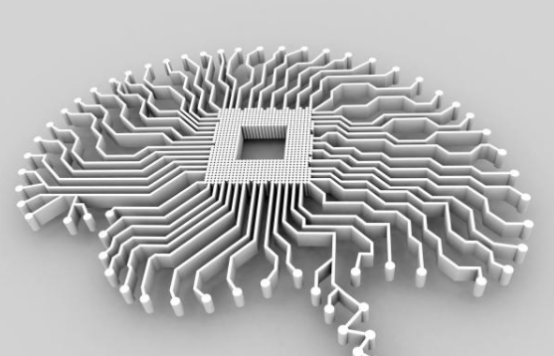How to use artificial electronic technology to construct artificial brain?
Digital supercomputers are expensive to manufacture and consume a lot of energy. Even so, they are still struggling to deal with problems that the human brain is good at (such as understanding speech or recognizing photo content). In the past few years, although artificial neural networks using deep learning algorithms have made great progress, some computer scientists believe that they can do better by using systems that are closer to the biological brain. This is neuromorphic computing. Also known as brain simulation. Neuromorphic computing can not only complete tasks that cannot be accomplished by current computers, but also allow us to understand the mechanisms of human memory and cognition more clearly. Not only that, if researchers can develop such a machine built with analog circuits, the energy consumption of this machine will be much lower than that of current computers.
The National Institute of Standards and Technology (NIST) Nanoscience and Technology Center is located in Gaithersburg, Maryland. The center's project director and physicist Mark Stiles (Mark Stiles) said: "The real motivation for studying neuromorphic computing is energy efficiency, and the current CMOS-based design is particularly poor in energy efficiency." Analog circuit calculation operations It consumes less energy than current complementary metal oxide semiconductor (CMOS) circuits, so it is more energy efficient. But on the other hand, analog circuits are very sensitive to noise, and the current technology for designing and manufacturing analog circuits is not as advanced as CMOS chips.
The Nanoelectronics and Spintronics Laboratory of Professor Ohno, Tohoku University, Sendai, Japan is dedicated to the research of such analog electronic components. They have made a device that can be used as an artificial synapse. The development of this device is based on spintronics, which is the quantum theory that electron spin produces magnetism. The device they developed consisted of a cobalt / nickel ribbon that was ferromagnetic, which meant that the spins in it would all be aligned.

It is then crossed with an antiferromagnetic platinum-manganese alloy ribbon, and the electron spin directions in adjacent atomic layers in the material are perpendicular to each other. Applying current on the antiferromagnetic layer can affect its spin direction, which in turn causes torque to be applied to the spin electrons in the magnetic layer, thereby switching the degree of magnetization from high to low. Unlike digital systems, this switching is not limited to two states, 0 or 1, but can be subdivided, depending on the amount of current applied.
A reading current lower than the switching current amount will not cause magnetization switching, but the output voltage depends on the magnetization level. Sending multiple signals can cause the spintronic device to adjust its own impedance, which produces an effect similar to strengthening or weakening the connection between neurons, just like when synapses in the brain form memories. Brain scientists call this process plasticity. William Borders, a PhD student in Ono Lab who participated in the project, said: "The more signals we send out during this learning process-that is, the more times we increase or decrease the weight in the learning and understanding process, the The more opportunities there are for the system to remember what we really want it to do. By training the system to associate one magnetization pattern with the letter C and another magnetization pattern with the letter T, the system will then be able to recognize it again by measuring the impedance These letters. "
Unlike Ohno's research team simulating a single synapse, Steyrs' research team is simulating a group of neurons and synapses based on spintronics. Their device consists of two separated ferromagnetic layers. When a current flows through the junction, it generates a torque on the spin electrons of the material, which will produce a nonlinear oscillation of the magnetization and thus a voltage oscillation. Real neurons behave similarly to this kind of nonlinear oscillator, and emit electrical pulses that are synchronized with each other. Therefore, spintronic oscillators can simulate activities in the brain.
Another method of constructing synapses with analog circuit technology is the use of memristors, which are the fourth basic circuit components recently discovered. The flow of current in the memristor will change its resistance, thus making the device memory. Dmitri Strukov, a professor of electrical and computer engineering at the University of California, Santa Barbara, is using memristors to create a multi-layer perceptron network with simplified synaptic functions. He said: "The biological network is much more complicated, for example, the information is encoded according to the timing and shape of the pulse, and we can only ignore this at present."
In the learning phase, use a high voltage to adjust the state of the memristor; in the inference phase (such as trying to match the new visual mode with the learned mode), use a lower voltage. Strukov said that memristors are promising technologies because it is possible to make them small and easily stacked to meet the high density required by neuromorphic systems. But on the other hand, the process of manufacturing them is not perfect, and it is not yet possible to reliably produce billions of intact devices.
If you want to know more, our website has product specifications for semiconductor, you can go to ALLICDATA ELECTRONICS LIMITED to get more information

